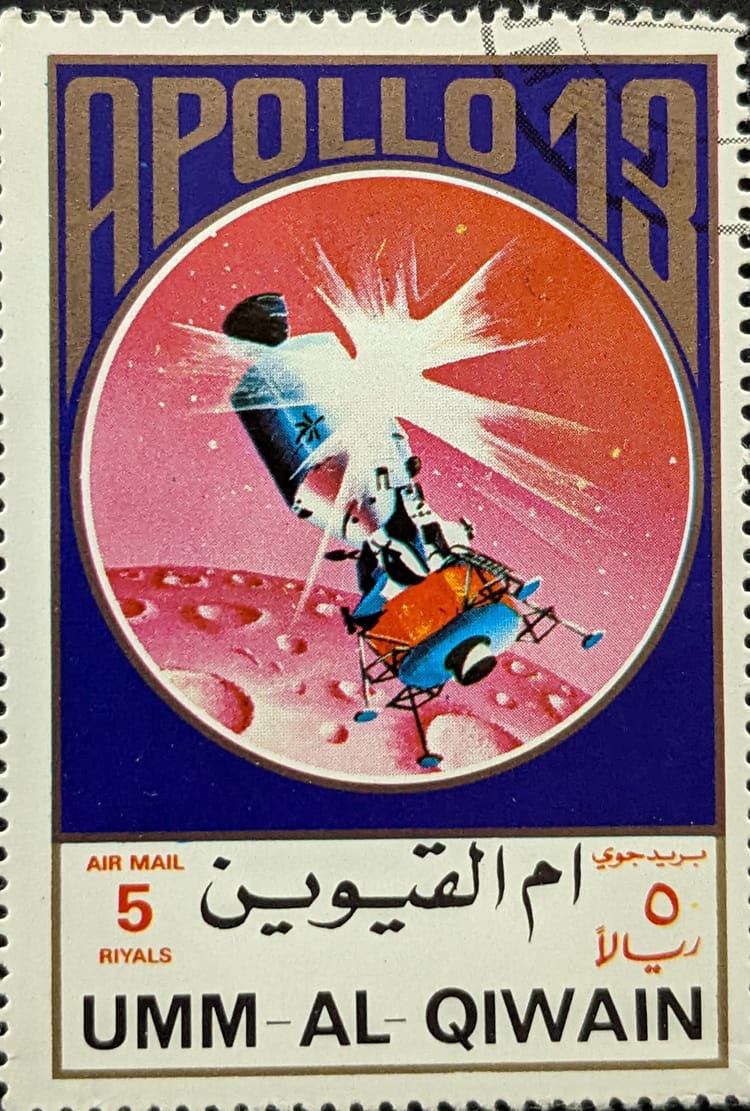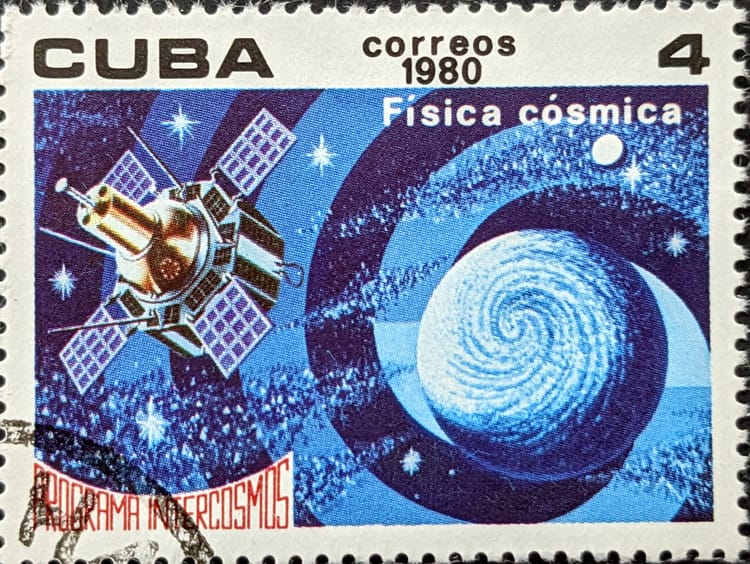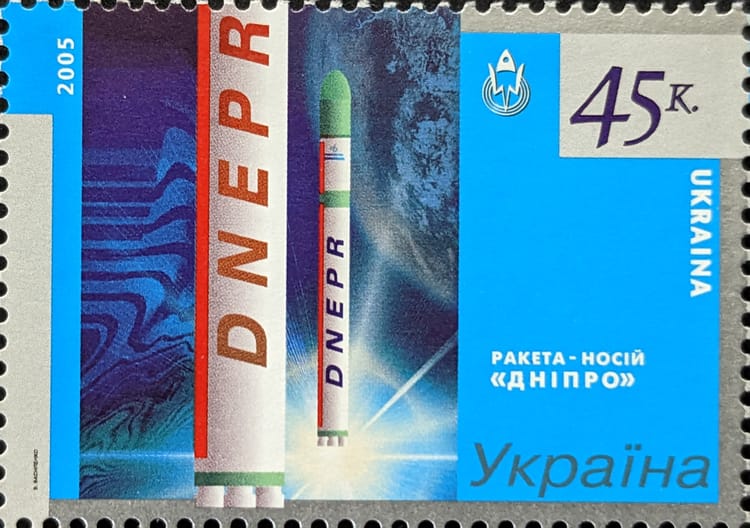Help/Hindrance--U.S. Government is here to Help Commercial Launch “Market”
An opinion piece from Kirk Pysher was published last week. In “Will commercial and military launch programs ever be truly complementary?,” Pysher contends that it would be risky for the Department of Defense (DoD) to “leverage benefit from commercial launch.” In fact, he goes on to say that DoD activities can benefit U.S. commercial launch service providers:
In fact, I believe history has demonstrated that it is commercial launch that is able to leverage the benefits derived from the steady cadence of defense and civil government launches.
For those of you wondering who Pysher is and why sites are publishing his opinion, until last October, Pysher was the president of International Launch Services (ILS), a joint venture offering Russia’s Khrunichev State Research and Production Space Center’s (Khrunichev) Proton launch vehicle for commercial launches. The Proton is a beautiful-looking rocket in an elegant launch system. It’s very capable, able to lift over 22 tons of mass to low Earth orbit (LEO). It is also plagued by questionable reliability even now. This probably grates on Pysher a little, as he was once the company’s head honcho for operations, including mission assurance.
Past Performance Is No Guarantee of Future Results
There are a few assertions Pysher uses to bolster his contentions. Condensed, they are:
- History doesn’t show the commercial launch market as stable
- The commercial geostationary satellite market has declined
- Satellite operators are looking for ways to cut costs...including launch costs
- History shows the government as the stable patron in the launch “market”
- The USAF’s Evolved Expendable Launch Vehicle program (he references NSSL--National Security Space Launch) provided stability since 2003
- Since 1980, DoD-focused launches averaged eight per year
Note how these assertions are using different datasets, one that’s based on worldwide numbers and the other more focused on the U.S. DoD.
As an example of the former, numbers are thrown about regarding annual launches of commercial geosynchronous communications satellites over time. Pysher notes the number of those types of satellites has gone done (with an expectation that they will stay down). While he doesn’t quite come out and say all of those satellites launched annually are worldwide numbers, he hints at it with “three global launch suppliers.” I assume those suppliers are the United Launch Alliance (ULA), Arianespace, and Roscosmos.
The latter assertion promulgates the notion that U.S. government launches, specifically those for the DoD, are steady enough to provide stability for launch service providers is referencing a much smaller dataset. This history of U.S. government launches is where the “average eight annual launches” comes from. It’s not quite clear what year range is being selected to depict commercial launch as unstable.
Commercial Downturn
What appears to happen to U.S. commercial launch activity from 2003-2014 counters Pysher’s ultimate contention, which is that DoD space missions can benefit U.S commercial launch (please consult this analysis for an explanation of how I define commercial and government missions) service providers. From 2004 (which were likely contracts signed with Boeing and Lockheed Martin before EELV) the number of commercial missions launched on U.S. launch vehicles went down to zero from 2010-2012. If it hadn’t been for two SpaceX launches in 2013, that, too, would have been a zero year.

Graph data came from Gunter's Space Page and The Space Report
The average number of commercial launches with U.S. rockets was less than 2 per year between 2003 and 2013. The highest share of commercial launches for U.S. launch service providers between 2003 and 2013 was in 2004, with nearly a third of all 16 U.S. launches. Note, too that from 2013 (the year of the first commercially-focused SpaceX missions), while the number of U.S. launches generally goes up, the share of commercial missions using U.S. launch service providers increases as well.
Looking at the graph above, all the other U.S. launches occurring between 2003 and 2014 were for civil and military missions. Those missions appear to somehow stunt and even decrease commercial launch activity in the U.S. Based on the graph, some might conclude that the commercial sector’s share increase in later years was in spite of EELV and not because of it. The launch provider launching a majority of commercial missions from the U.S. from 2013 on is SpaceX, routinely launching over three-quarters of commercial missions through 2018.
Mixed Results with Commercial Space
Taking another step back to look at how the U.S compared with global launches from 2003-2018.

Graph data came from Gunter's Space Page and The Space Report
While the U.S. launch service provider share is significant, the share of commercial launches conducted by those companies is paltry from 2003-2013. That changed in later years, as U.S. launch service providers claimed around 50% of GLOBAL commercially-focused launches (which made up nearly 25 launches each of those years) in 2017 and 2018. That share increase comes in spite of those years growing to some of the highest totals of global launch attempts during that span of time.
It’s even worse for the U.S. when we use U.S. commercial launches compared with the 20-25 GEO communications satellites launched annually from 2003-2014 (when Pysher notes those types of satellites start declining). As noted earlier, there were zero commercially-focused launches from the U.S. from 2010-2012.
That's zero commercial satellites of any type launched during a time that Pysher estimates there should have been 20-25 commercial communications satellites launched. Using the optimistic number of 25 from Pysher’s range, the highest share of U.S. communications satellites from that number is 16% in 2004.
What’s puzzling, however, is that commercial launches grew worldwide during the very years Pysher points to a decline geosynchronous communications satellites. As interesting, U.S. commercial activities, in particular, increased during the last few years of the range, gaining ~50% of global commercial missions.
What to make of all this?
While the assertion is that GEO commercial communications satellites being launched declined from 2014 through today, at least in 2018 some other commercial satellites took the place of those satellites and increased the share of commercial launches worldwide. And, while commercial satellite operators appear to be cutting costs, some are perhaps also using lower-priced launch options, which also increased the number of launches globally.
The idea of U.S. government launches creating a “launch market” is dubious at best. Others have floated that flawed idea as an accepted gospel. I questioned it many months ago in “Is the U.S. National Security Space “Launch Market” only big enough for two launch providers?” That concept bolsters justification of the U.S. Air Force’s/Space Force’s justification for “picking winners”--even if a winner doesn’t have a mission-proven launch vehicle. It’s also what underpins opinion pieces such as Pysher’s. It’s clear from the opinion’s context that the commercial launch market not being stable is meant to be negative. But an unstable market can be positive, too.
In investing, “stable” is a term used to identify funds for the risk-averse. If a person is retiring, then shifting the nest egg over to a stable fund (or funds) is one of the more popular options to choose from. But if a person wants to have more options in life down the road (retire with the possibility of a lot of money), a little risk is involved--choosing a fund that’s not stable, but not stable in the “correct” direction--up. With stability, there is little to no growth. With no stability, there’s the possibility of great growth--and great risks as well.
This is why NSSL is not beneficial to the U.S. launch market as a whole--certainly not for the commercial part: it’s meant to capture what is good today but benefits very few in the process. The stability is a snapshot in time, freezing capabilities to shun risk, which excludes development of new capabilities and businesses. No matter what a space acquisitions program publicly states as its goal, if the words "security" or "stability" are part of it, then the words "development," "cutting-edge," and even "best" mean nothing.
We saw this with EELV--there were stable DoD launches annually. These launches grew progressively expensive and provided great launch reliability. There were also, however, very few commercial launches from the U.S. from 2003 until SpaceX came on the stage.
The history and data of commercial launches from the U.S. do not support any contention that EELV benefits the commercial sector--at least not from 2003-2018. It doesn’t appear to support the contention that the government (and DoD in particular) would be putting itself at risk if it leveraged commercial launch services, perhaps more openly.
Historical data indicates NSSL programs appear to suppress and even diminish commercial space launch activities in the U.S. while distorting the value of space launch. In that light, for military launch programs to be complementary with commercial space launch some other method of procuring launch services may be better than how DoD is currently acquiring them.




Comments ()